
Who's That Girl: Original Motion Picture Soundtrack is the first soundtrack album by American singer and songwriter Madonna. It was released on July 21, 1987, by Sire Records to promote the film of the same name. It also contains songs by her label mates Scritti Politti, Duncan Faure, Club Nouveau, Coati Mundi and Michael Davidson. The soundtrack is credited as a Madonna album, despite her only performing four of the nine tracks on the album. After the commercial success of the film Desperately Seeking Susan (1985), in which she co-starred, Madonna wanted to act in another comedy film titled Slammer, about a woman named Nikki Finn who was falsely accused of homicide. However, due to the critical and commercial failure of her adventure film Shanghai Surprise (1986), Warner Bros. was initially reluctant to greenlight the project but later agreed, after Madonna convinced them and also because they wanted to cash in on Madonna's success with soundtracks.

"Who's That Girl" is a song by American singer Madonna from the soundtrack album of the 1987 film, Who's That Girl. It was released on June 23, 1987, by Sire Records as the first album single. While shooting for the film, then called Slammer, Madonna had requested Patrick Leonard to develop an uptempo song that captured the nature of her film persona. She later added the lyrics and vocals to the demo tape developed by Leonard, and decided to rename the song as well as the film to "Who's That Girl".

"Dress You Up" is a song by American singer Madonna from her second studio album, Like a Virgin (1984). It was released as the album's final single on July 24, 1985, by Sire Records. Written by Andrea LaRusso and Peggy Stanziale, and produced by Nile Rodgers, who also played guitar on the track, it was the final song to be added to the album. Rodgers had asked the writers to compose something similar to the work of his band Chic but, due to LaRusso and Stanziale being busy with other projects, the composition took time. When the lyrics were submitted, the producer initially rejected them, as he felt there was no time to compose a melody; Madonna, however, liked the lyrics and convinced him to included the song on Like a Virgin. Musically, "Dress You Up" is a dance-pop song whose lyrics are an extended metaphor for fashion and lust, comparing dressing up with passion.
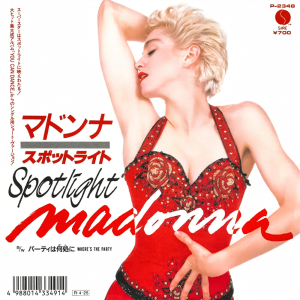
"Spotlight" is a song by American singer Madonna from her first remix album You Can Dance (1987). It was released as a single in Japan on April 25, 1988 by Sire Records and Warner-Pioneer Japan. Initially rejected during her True Blue album recording sessions, the song was written by Madonna, Stephen Bray and Curtis Hudson who had presented the original to the singer. It was inspired by the song "Everybody Is a Star" (1970) by American rock band Sly and the Family Stone. The song was remixed by Shep Pettibone, with additional mixing done by John "Jellybean" Benitez.

"Causing a Commotion" is a song by American singer Madonna from the soundtrack album to the 1987 film Who's That Girl. It was released as the album's second single on August 25, 1987 by Sire Records. Its Silver Screen Single Mix later appeared on the EP The Holiday Collection (1991). Written and produced by Madonna and Stephen Bray, the song was inspired by her relationship with then-husband Sean Penn, and his abusive and violent nature. Containing a dance-oriented, up-tempo groove, the song begins with the chorus and is accompanied by a four-note descending bassline and staccato chords in the verses.
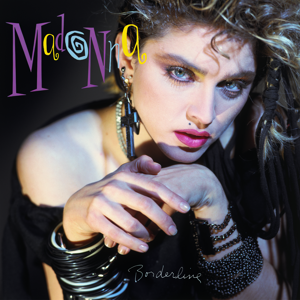
"Borderline" is a song by American singer Madonna from her debut studio album Madonna (1983). Written and produced by Reggie Lucas, the song was remixed by John "Jellybean" Benitez. It was released by Sire Records as the fifth and final single from the album on February 15, 1984. The song is also included on Madonna's greatest hits albums The Immaculate Collection (1990) and Celebration (2009).

"Everybody" is the debut single by American singer Madonna, released on October 6, 1982, under the label Sire Records. The single was featured on her debut studio album Madonna (1983). Madonna had recorded a demo of the song with Steve Bray. She urged DJ Mark Kamins, who DJed at Danceteria, to play it. He was impressed by the song and took her to Sire Records, who signed her for a two-song deal. However, after the recording of the two singles was over, Sire executive Michael Rosenblatt was not interested in the other song produced and decided to release only "Everybody".

"Crazy for You" is a song recorded by American singer Madonna for the film Vision Quest (1985). It was released on March 2, 1985 by Geffen Records as the lead single from the film's soundtrack album. Film producers Jon Peters and Peter Guber, along with music director Phil Ramone, decided to use Madonna after listening to her previous recordings, employing John Bettis and Jon Lind to write the song. After reading the script of the film, Bettis and Lind wrote the song about the situation in which the lead characters meet at a nightclub. Initial recording sessions did not impress Bettis and Lind, and they felt that "Crazy for You" would be dropped from the soundtrack. However, a new version was recorded to their liking.

"Into the Groove" is a song recorded by American singer Madonna, and featured on the 1985 film Desperately Seeking Susan. Written and produced by both Madonna and Stephen Bray, the main inspiration behind the song was the dance floor; the singer wrote it while watching a Latin American man whom she was attracted to. Its instrumentation features synthesizers and drum machines, with Madonna's voice beings double tracked on the chorus. Sexual innuendos and undertones are present throughout the lyrics, which are written as an invitation to dance with the singer. Originally written for her friend Mark Kamins, Madonna later decided to use it on the film, as one of the scenes needed a dance song. It was later added to the 1985 international re-issue of her second studio album, Like a Virgin (1984), and remixed for her compilations You Can Dance (1987), and The Immaculate Collection (1990).

"Another Suitcase in Another Hall" is a song recorded by Scottish singer Barbara Dickson, for the 1976 concept album Evita, the basis of the musical of the same name. The musical was based on the life of Argentinian leader Eva Perón. Written by Tim Rice and Andrew Lloyd Webber, the song is presented during a sequence where Eva throws her husband's mistress out on the streets. The latter sings the track, wondering about her future and concluding that she would be fine. The songwriters enlisted Dickson to record the track after hearing her previous work.
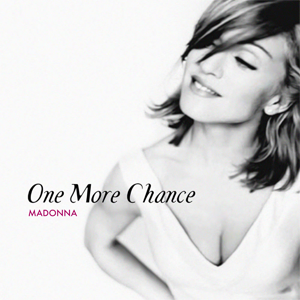
"One More Chance" is a song by American singer Madonna for her ballads compilation album, Something to Remember (1995). Written and produced by Madonna and David Foster, it was released on March 7, 1996 by Maverick Records as the album's second single in Australia and Japan, and the third single in the European countries. An acoustic pop ballad, the song lyrically talks about attempting to win a lost lover back. The song was inspired by Madonna's real life experience, but she wrote it from the opposite point of view.

"Open Your Heart" is a song recorded by American singer-songwriter Madonna for her third studio album True Blue (1986). Written by Gardner Cole and Peter Rafelson, it was conceived as a rock and roll song titled "Follow Your Heart" for singer Cyndi Lauper, but Cole and Rafaelson never had the chance to play it for her. At the time, Cole's management was working with Madonna's, who were looking for material for her third studio album. After her manager asked Cole to present a female demo of the song, Madonna accepted it and, alongside producer Patrick Leonard, turned it into a dance song. Lyrically, it's an innuendo-laden love song where the singer expresses her sexual desire. In the United States, the song was released as the fourth single from True Blue on November 12, 1986; overseas, it was released on December 1. Furthermore, it was included in the compilation albums The Immaculate Collection (1990) and Celebration (2009).
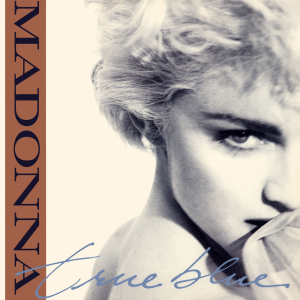
"True Blue" is a song by American singer Madonna from her third studio album of the same name (1986), released as the third single on September 17, 1986, by Sire Records. Written and produced by Madonna and Steve Bray, the song deals with Madonna's feelings for her then-husband Sean Penn. A dance-pop song, it features instrumentation from a rhythm guitar, a synthesizer, keyboards, and drums. The main chorus is backed by an alternate one, incorporating a chord progression generally found in doo-wop music.

"Rescue Me" is a song by American singer Madonna from her first greatest hits album, The Immaculate Collection (1990). Written and produced by Madonna and Shep Pettibone, the song was not planned to be released as a single initially, but its continuous radio airplay prompted Sire Records to release "Rescue Me" as the second single from The Immaculate Collection on February 26, 1991, in the United States, and as the third single on April 7 in the United Kingdom. A dance-pop and gospel-house track, the song is accompanied by the sound of thunder and rain, with the lyrics talking of romantic love rescuing the singer.

"Cherish" is a song by American singer Madonna from her fourth studio album, Like a Prayer (1989). It was written and produced by Madonna and Patrick Leonard, and was released by Sire Records as the album's third single on August 1, 1989. "Cherish" was built around the themes of love and relationships, with William Shakespeare's Romeo and Juliet being one of the major inspirations. The track also included a line from "Cherish" by the 1960s band the Association. Musically constructed as a doo-wop-style pop song, it is regarded as a light-hearted track by critics and includes instruments such as a drum machine, percussions, keyboards and a saxophone. Lyrically, it speaks of Madonna's devotion to her lover, and her promise to be always by his side. "Cherish" was included on Madonna's greatest hits compilations The Immaculate Collection (1990) and Celebration (2009).
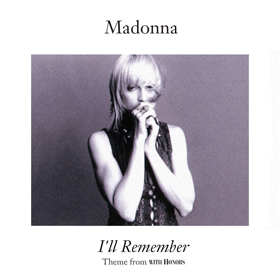
"I'll Remember" is a song by American singer Madonna for the 1994 film With Honors. It was released by Maverick and Warner Bros. Records on March 8, 1994, as the lead single from the film's soundtrack album. It was a radical change in image and style for Madonna, who had received huge backlash due to the release of her book Sex, the studio album Erotica and the film Body of Evidence. Warner Bros. decided to release the song for the film after noting most of her previous soundtrack singles had achieved commercial success. It utilizes a synthesized keyboard arrangement to bring about a continuously reverberating heartbeat sound. Madonna's voice is supported by backing vocals.

"Oh Father" is a song recorded by American singer Madonna for her fourth studio album Like a Prayer (1989). It was released as the fourth single from the album on October 24, 1989, by Sire Records. The song was not released as a single in most European territories until December 24, 1995, when it appeared on the 1995 ballads compilation Something to Remember. Written and produced by Madonna and Patrick Leonard, the nexus of "Oh Father" was the presence of male authoritative figures in Madonna's life, most prominently her father, Tony Ciccone. Madonna's relationship with her father had soured after her mother's death in 1963 and his remarriage three years later. While developing the Like a Prayer album, Madonna was in an emotional state of mind due to her personal problems, which is reflected in "Oh Father".
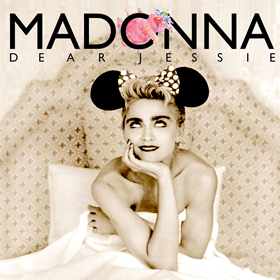
"Dear Jessie" is a song by American singer Madonna from her fourth studio album Like a Prayer (1989). It was released as the fifth single from the album on December 4, 1989, by Sire Records. Written and produced by Madonna and Patrick Leonard, the song was inspired by Leonard's daughter Jessie. The release of "Dear Jessie" was limited to the United Kingdom, certain other European countries, Australia and Japan. The track is composed more like a children's lullaby rather than a pop song, and features strings, synthesizer and strummed acoustics. A change in tempo occurs during the breakdown, where instrumentation from trumpets is included. Lyrically, the song evokes a psychedelic fantasy landscape, in which pink elephants roam with dancing moons and mermaids.

"Hanky Panky" is a song by American singer Madonna from her soundtrack album I'm Breathless. It was released on June 12, 1990, by Sire Records as the album's second and final single. Written and produced by Madonna and Patrick Leonard, the song was developed from a line in the parent film, Dick Tracy, talking about a woman who enjoys being spanked by her partner. Performed in an almost comical style, "Hanky Panky" is a jazz and swing song with a changing bassline and minor to major key-shift in the chorus. It caused some controversy in Ireland because of its innuendo and racy lyrics, with women's groups deeming them as harmful; Madonna later clarified that the lyrics were intended as a joke.

"Keep It Together" is a song by American singer Madonna from her fourth studio album, Like a Prayer (1989). It was released as the fifth and final single from the album in the United States, Canada and Japan on January 30, 1990, by Sire Records. Written and produced by Madonna and Stephen Bray, the main inspiration behind "Keep It Together" was Madonna's relationship with her family—whom she dearly missed after her divorce from Sean Penn. The song was dedicated to the American band Sly and the Family Stone. The lyrics deal with the realization of how important Madonna's family has been to her life. A pop, funk and deep funk song consisting of an upbeat rhythm and groove, "Keep It Together" features instrumentation from percussion, banjo and a conga.






















